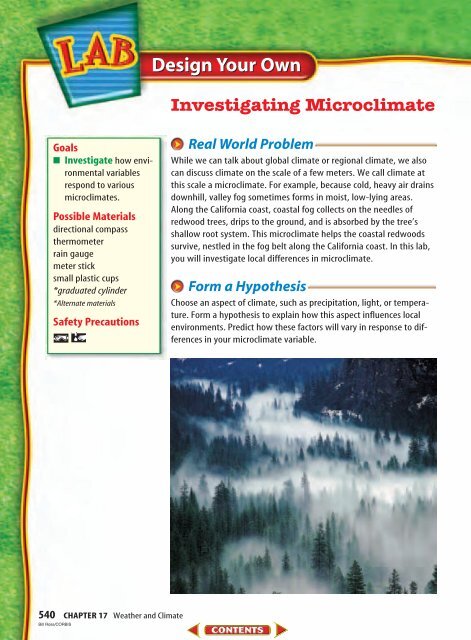CHAPTER 17 Weather and Climate - Mr. Barrow's Science Center
CHAPTER 17 Weather and Climate - Mr. Barrow's Science Center
CHAPTER 17 Weather and Climate - Mr. Barrow's Science Center
You also want an ePaper? Increase the reach of your titles
YUMPU automatically turns print PDFs into web optimized ePapers that Google loves.
Design Your OwnInvestigating MicroclimateGoals■ Investigate how environmentalvariablesrespond to variousmicroclimates.Possible Materialsdirectional compassthermometerrain gaugemeter sticksmall plastic cups*graduated cylinder*Alternate materialsSafety PrecautionsReal World ProblemWhile we can talk about global climate or regional climate, we alsocan discuss climate on the scale of a few meters. We call climate atthis scale a microclimate. For example, because cold, heavy air drainsdownhill, valley fog sometimes forms in moist, low-lying areas.Along the California coast, coastal fog collects on the needles ofredwood trees, drips to the ground, <strong>and</strong> is absorbed by the tree’sshallow root system. This microclimate helps the coastal redwoodssurvive, nestled in the fog belt along the California coast. In this lab,you will investigate local differences in microclimate.Form a HypothesisChoose an aspect of climate, such as precipitation, light, or temperature.Form a hypothesis to explain how this aspect influences localenvironments. Predict how these factors will vary in response to differencesin your microclimate variable.540 <strong>CHAPTER</strong> <strong>17</strong> <strong>Weather</strong> <strong>and</strong> <strong>Climate</strong>Bill Ross/CORBIS


